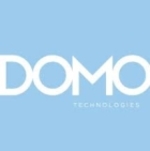Pentaho Business Analytics platform overall is an outstanding product that offers great cost saving solutions for companies of all sizes. The Pentaho Business Analytics platform is built on top of several underlying open source projects driven by the community’s contributions. There are several features that I find invaluable and with each release, improvements are made.
The Pentaho User Console provides a portal for users that makes it easy for users to explore information interactively. Dashboard Reporting, scheduling jobs, and managing data connections are some of the features that are made easy with the console. For more advanced users you can extend Pentaho Analyzer with custom visualizations or create reporting solutions with Ctools. The Marketplace empowers the community to develop new and innovative plugins and simplifies the installation process of the plugins for the users of the console. The plugin framework provides a plugin contributor that extends the core services offered by the BI Server.
Pentaho Data Integration (Spoon) is also another valuable tool for development. Spoon delivers powerful extraction, transformation, and load capabilities using a Metadata approach. The Data Integration graphical drag and drop design is easy for new users to follow and can increase productivity. More advanced users can extend Pentaho Data Integration creating transformations and jobs dynamically.
My company was able to reduce software costs and hire additional staff given the cost savings that Pentaho provided. We are moving towards a Hadoop environment after the migration of our current ETL processes and Pentaho’s easy to use development tools and big data analytics capabilities were a factor in choosing Pentaho as a solution.
For those that run the open source community edition at times it can be difficult to find updated references for support. Even for companies that use the Enterprise Edition finding useful resources when a problem occurs can be difficult. Pentaho driven best practices should be made available to both the Community and Enterprise users to motivate and empower more users to use the solutions effectively.
Pentaho has stellar support services with extremely intelligent Pentaho and Hitachi consultants all over the world. Those support services and documentation are made available to Enterprise clients that have purchased the Enterprise Edition and have access to the support portal.
Pentaho is easy to deploy, easy to use and maintain. It’s low cost and a fully supported business intelligence solution. I have used Pentaho in small and large organizations with great success.
Enterprise licenses can be paid for the Enterprise Pentaho full service solution which offers support through the portal and access to Pentaho/Hitachi Consultants for additional costs.
Pentaho offers a community edition which is an open source solution and can be downloaded for free. The community edition truly gives most companies everything they need but your solution needs are matched with your business needs. As a cost cutting option Enterprise license fees can be paid to vendors to fund in demand support.
















